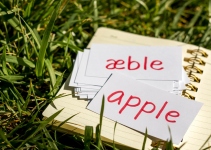For many people, completing a degree or a certification can be out of their reach. After all, tuition fees are at an all-time high; most would just opt to find work straightaway. Yet by not completing formal education, many people may end up missing out on opportunities that require these academic qualifications.
Thankfully, Australia has a certification pathway called Recognition of Prior Learning (RPL). Similar to the Accreditation of Prior Learning (APL) in the United Kingdom, this scheme allows persons to gain a certification based on their skills, knowledge, and work experience. That way, they can gain the right credentials, without needing to spend lots of time and money in school.

Here’s a quick overview of the process to get an RPL in Australia:
Get in touch with a Registered Training Organisation (RTO)
RTOs in Australia are authorized to issue nationally-recognized certifications or credentials for accredited sources. Examples of RTOs include community colleges, TAFE, and private providers. Not only are they in charge of awarding credentials, but these organizations can also help you identify which qualifications you can get and how to fill the gaps in your skillset to earn a specific qualification.
Make sure to contact the right RTO, as some only specialise in specific industries.
Take a Self-Assessment Test
Some RTOs and even territory governments offer self-assessment tests to start the process for getting the RPL. This will allow you to pinpoint which RPL is the best fit for your current skillset.
Talk to your employer about the RPL
You’ll become more of an asset to your company once you get your RPL, so make sure to let your employer know about it. That way, your employer may be able to help you out in gaining the credential. This is especially since some RTOs may want to observe you at work,seeing how you accomplish tasks related to the certification. Your fellow employees may be also interviewed by the RTO about how you perform at work.
Collect and submit evidence of proficiency
Of course, a certifying body will need to have proof of your expertise before they can issue an RPL. This is where the need to this evidence comes in.
For example, if you’re going for an RPL in Information Technology, it can help to create a portfolio that showcases the projects you’ve worked on such as an app or a website. You can also create something similar if you’re in a more creative field, such as graphic arts or even more traditional crafts.
Meanwhile, for other RPL requirements, you may need to pass an assessment or be observed at work. Video or audio evidence of you performing tasks can be also submitted.
Await the RTOs decision
Once you’ve submitted the evidence to the RTO, they will assess it against the standards for the specific qualification. Hence, all you need to do is wait for their decision. If you complete all the requirements, then congrats—you’ll be recognized as “Competent” and awarded the RPL.
However, sometimes the ruling won’t be favourable. The RTO may decide that you’re “Not Yet Competent,” meaning you still need to enrol in a training class to cover for the gaps in your skillset or complete additional work-related projects. You may also receive a “Further Evidence Required” decision, which, as it suggests, requires you to send additional proof to the RTO for further assessment.
As this quick overview shows, the process to gain an RPL is pretty straightforward. It’s easier to finish this than enrolling in a course and completing it to gain the same qualification. Hopefully, with this guide, you’d be more motivated to gain the credentials you’ve always deserved.



